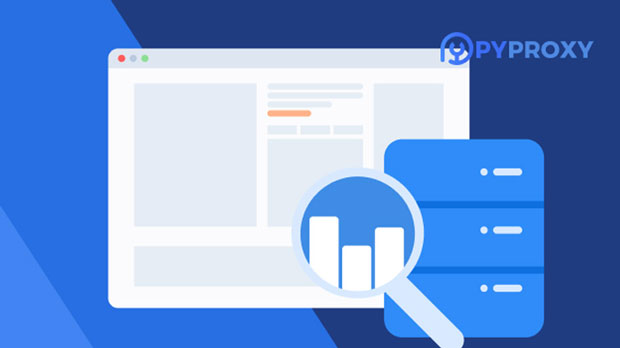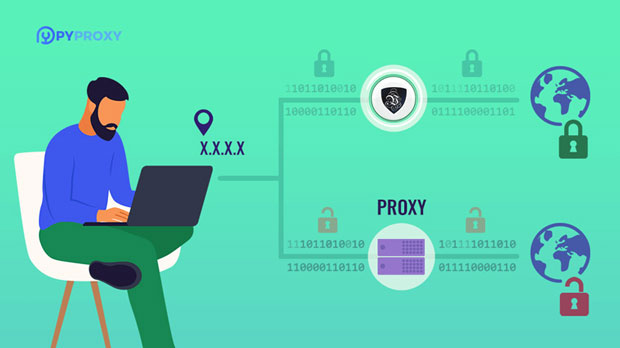Free proxy server list Is SOCKS5 suitable for crawler data crawling? How to avoid being blocked?
Web scraping has become an indispensable tool for businesses, researchers, and developers looking to collect data from the internet. However, scraping is often accompanied by challenges such as IP blocking and CAPTCHA verification. To mitigate these issues, many people turn to proxies, with socks5 proxies being one of the popular options. In this article, we will explore whether SOCKS5 proxies are suitable for web scraping, their benefits, and potential drawbacks. Additionally, we will provide insights on how to avoid getting blocked during the scraping process. This article is designed to offer practical advice for anyone looking to enhance their scraping operations while minimizing risks. Understanding socks5 proxy for Web ScrapingA SOCKS5 proxy is a protocol that allows clients to route their internet traffic through a third-party server, masking their original IP address. It functions at a lower level than other types of proxies, such as HTTP proxies, making it highly flexible for a variety of internet activities, including web scraping. Unlike HTTP proxies, which only handle HTTP or HTTPS requests, SOCKS5 can manage any type of internet traffic, including FTP, SMTP, and others.For web scraping, the most important feature of SOCKS5 proxies is their ability to handle traffic more anonymously. This makes it harder for websites to detect and block scrapers, which is crucial when you are trying to gather data at scale. However, SOCKS5 proxies come with their own set of advantages and disadvantages, which are important to understand before using them for scraping.Advantages of Using SOCKS5 for Web Scraping1. Enhanced Anonymity and Privacy SOCKS5 proxies do not modify the content of the data passing through them. This means that your browsing activity remains undetected, and your real IP address is kept hidden from the target websites. This anonymity is especially beneficial for web scraping, as websites are less likely to identify and block your traffic if they cannot trace it back to a specific source.2. Bypassing Geolocation Restrictions SOCKS5 proxies allow users to select IP addresses from different geographical locations. This feature is beneficial if the website you are scraping has region-based restrictions. For example, certain data may be available only to users in specific countries. By using SOCKS5 proxies from various locations, you can bypass these geographical limitations.3. Support for All Protocols Since SOCKS5 proxies support all internet protocols, they provide greater flexibility for scraping operations that involve complex tasks such as FTP data retrieval or other non-HTTP-based interactions. This can be a key advantage when you need to gather data from sources beyond regular web pages.Challenges of Using SOCKS5 for Web Scraping1. Performance Issues Free SOCKS5 proxies are often slower compared to premium services. Since many free proxy servers are used by multiple users simultaneously, they can become overloaded, leading to slow connection speeds and high latency. When scraping large amounts of data, performance issues can significantly impact the efficiency of your scraping process.2. Reliability of Free SOCKS5 Proxies While free SOCKS5 proxies may seem appealing, they are not always reliable. Many free proxy lists are prone to downtime, or the proxies may be detected and blocked by websites quickly. Additionally, free proxies are often not as secure as their paid counterparts, increasing the risk of exposure and data leakage.3. Potential for Detection Websites are becoming increasingly sophisticated in detecting and blocking proxy traffic. While SOCKS5 proxies offer a high level of anonymity, they are not entirely foolproof. Certain advanced detection mechanisms, such as behavioral analysis, machine learning algorithms, and traffic pattern recognition, can still identify and block proxy usage, especially if the proxy's IP is flagged by previous scraping attempts.How to Avoid Getting Blocked While Using SOCKS5 Proxies for ScrapingAvoiding detection and IP blocking is one of the biggest challenges when using proxies for web scraping. Here are several strategies that can help you minimize the risk of getting blocked:1. Rotate Proxies Frequently One of the most effective ways to avoid detection is by rotating proxies regularly. This involves switching between multiple SOCKS5 proxies during a scraping session, which helps prevent a single IP address from being flagged for suspicious activity. You can automate this process using proxy rotation services or software to ensure that your requests are distributed across a large pool of IP addresses.2. Use residential proxies While free SOCKS5 proxies may not provide the highest level of security, residential proxies (which use real residential IPs) offer more robust protection against detection. These proxies mimic normal user behavior more effectively, making it harder for websites to detect and block your traffic. Residential proxies are not commonly blacklisted, which significantly reduces the risk of being blocked.3. Mimic Human Behavior Websites use various methods to detect bots, such as tracking the speed and frequency of requests. To avoid being flagged as a bot, make sure to simulate human-like behavior. This can be done by randomizing your scraping intervals, introducing delays between requests, and making sure the request patterns do not appear too regular. Additionally, avoid scraping too much data too quickly from a single website, as this could trigger anti-bot mechanisms.4. Implement CAPTCHA Solvers Many websites use CAPTCHA challenges to block bot traffic. To avoid being blocked by these challenges, you can use CAPTCHA solvers that automatically bypass the verification process. While this adds an extra layer of complexity to your scraping operation, it can help you access the data you need without manual intervention.5. Limit Request Rate and Simulate Real User Traffic To avoid detection, it is essential to keep your scraping activity under the radar. Avoid sending too many requests in a short period, as this is one of the easiest ways for websites to detect scraping activity. Instead, simulate the browsing behavior of a real user by spacing out your requests and varying the times between them.6. Monitor Proxy Health Regularly check the health of your SOCKS5 proxies to ensure that they are not blacklisted or flagged. You can use automated tools to monitor proxy status and rotate them when needed. This proactive approach can help you maintain smooth and uninterrupted scraping operations.ConclusionSOCKS5 proxies can be a valuable tool for web scraping due to their ability to provide anonymity, support multiple protocols, and bypass geographical restrictions. However, they come with certain limitations, such as performance issues and potential detection risks, especially when using free proxies. To optimize your web scraping process and avoid being blocked, it is important to rotate proxies frequently, simulate human behavior, use residential proxies where possible, and implement CAPTCHA solvers. By employing these best practices, you can significantly reduce the likelihood of being detected and blocked, ensuring a more successful and efficient web scraping operation.
2025-01-07

























































